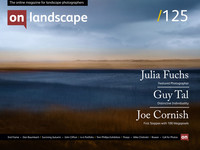The Art of Differentiation
In a human being, provided he has not been crushed by an economic or governmental machine, there is the same kind of individuality, a something distinctive without which no man or woman can achieve much of importance, or retain the full dignity which is native to human beings. It is this distinctive individuality that is loved by the artist, whether painter or writer. The artist himself, and the man who is creative in no matter what direction, has more of it than the average man. ~Bertrand Russell
We are today at a point where much that used to be impressive about the art of photography in the past no longer is, at least not to the degree that it used to be. Cameras today are smart enough as to rarely miss a proper exposure; automatic focusing has become fast and accurate; resolution, noise and dynamic range of digital sensors have reached impressive levels; software manufacturers boast a plethora of easy-to-apply presets and effects making it possible to produce beautiful results almost effortlessly and without great investment; high-quality large prints can be produced simply by uploading a file to a printing service; and it is remarkably easy to look up directions, or join a guided tour, to locations practically guaranteed to yield beautiful images. And indeed, an overwhelming plethora of such visually spectacular images—often of repetitive subjects and/or compositional templates—are posted to various media sites every day.
Ralph Waldo Emerson wrote, “The heroic cannot be the common, nor the common the heroic.” In an age when visual appeal and technical excellence have become commonplace and easy to accomplish, it should be acknowledged that such qualities today also are less impressive and less distinctive than they used to be. As more people become aware of how easy it is to produce visually appealing photographs; and as the same places and visual effects become more and more widespread and recognised; they also lose their distinction as indicators of the excellence of the photographer or serve to distinguish their work.


